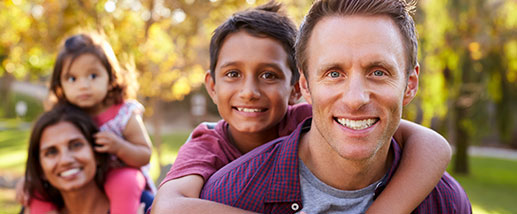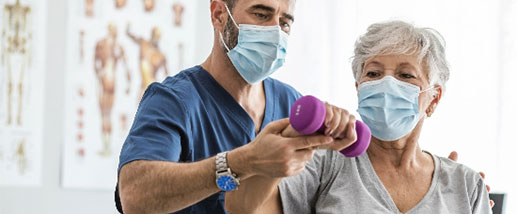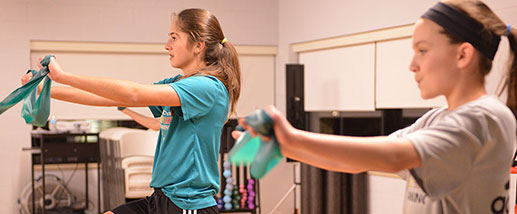As summer heats up, St. Joe’s trauma expert weighs in on the importance of bicycle safety
May 25, 2021Did you know that May is National Trauma Awareness Month? Alicia Kieninger, MD, Medical Director of Trauma Services at St. Joseph Mercy Oakland, used the occasion to help inform and educate the public by answering a few common questions children and their parents have regarding bicycle safety, a common cause of traumatic injury amongst pediatric patients.
Q: What are common injuries you see among children in bicycle accidents?
A: While bicycles are a common part of outdoor fun during the summer months, it is important to be aware of common bicycle related injuries in order to protect children. In addition to head injuries and broken bones, bicycles can also be associated with more subtle intra-abdominal injuries in children. Handle bar injures can occur when a child rapidly decelerates and is thrown forward over the bicycle handle bars. This situation can lead to subtle injuries to organs such as the small intestine or pancreas, which do not demonstrate significant signs of injury right away. If your child suffers this type of bicycle injury, it is important to have them evaluated right away to rule out more serious injuries.
Q: What protections do helmets provide children?
A: Helmets go a long way to protect your child’s skull and brain from potential life threatening injuries. However, in addition to protecting your child from the impact of a collision, bike helmets actually make the rider more visible to vehicles, which may help prevent accidents form occurring.
Q: Other than a helmet, what other precautions should parents or a child consider to ensure a fun, safe ride?
A: Make sure your child is properly supervised when riding their bike. In particular, be aware that newer bike riders may be more prone to accidents. It is important that their bicycle be appropriately sized for the child, and the seat be adjusted to the proper height. Wear sturdy closed toed shoes with backs on them that are not likely to fall off or become encumbered, and avoid long or loose fitting clothing. Make sure their helmet fits correctly and that they know how to put it on properly. Encourage them to ride on the sidewalk if possible. Wear bright, visible clothing that will make them more visible to motorists, and make sure to have lights available when riding at dusk.
Q: Is there anything else about bike helmets or bike safety that is important for parents and their children to know?
A: Your children learn from your actions. If you model the safety behaviors you want your child to use, they will be more likely to follow them. Most of all have fun!
For additional information, please visit: Bike | Safe Kids Worldwide





